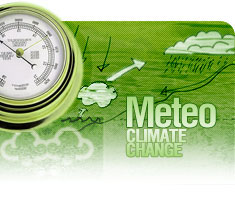It was already recognised in 1994 that the initial UNFCCC commitments would not be enough to halt the global increase in greenhouse gas emissions. On 11 December 1997, governments took a further step and adopted a protocol to the UNFCCC in the Japanese town of Kyoto. Building on the UNFCCC framework, the sets legally binding limits on greenhouse gas emissions in industrialised countries and envisages innovative market-based implementation mechanisms aimed at keeping the cost of curbing emissions low.
The targets cover emissions of the six main greenhouse gases, namely:
- Carbon dioxide (CO2);
- Methane (CH4);
- Nitrous oxide (N2O);
- Hydrofluorocarbons (HFCs);
- Perfluorocarbons (PFCs); and
- Sulphur hexafluoride (SF6).
Kyoto Emission reduction targets
Under the Kyoto Protocol, industrialised countries are required to reduce the emissions of six greenhouse gases (CO2, which is the most important one) on average by 5.2 % below the 1990 levels during the first "commitment period" from 2008 to 2012. There are no emission targets for developing countries.
The developed countries commitment will be achieved through cuts of 8% by Switzerland, most Central and East European states, and the European Union (the EU will meet its target by distributing different rates among its member states); 7% by the US; and 6% by Canada, Hungary, Japan, and Poland. Russia, New Zealand, and Ukraine are to stabilize their emissions, while Norway may increase emissions by up to 1%, Australia by up to 8%, and Iceland 10%. The six gases are to be combined in a "basket", with reductions in individual gases translated into "CO2 equivalents" that are then added up to produce a single figure.
Each country’s emissions target must be achieved by the period 2008-2012. It will be calculated as an average over the five years. "Demonstrable progress" towards meeting the target must be made by 2005. Cuts in the three most important gases – carbon dioxide (CO2), methane (CH4), and nitrous oxide (N20) - will be measured against a base year of 1990 (with exceptions for some countries with economies in transition).
Cuts in three long-lived industrial gases – hydrofluorocarbons (HFCs), perfluorocarbons (PFCs), and sulphur hexafluoride (SF6) - can be measured against either a 1990 or 1995 baseline. (A major group of industrial gases, chlorofluorocarbons, or CFCs, are dealt with under the 1987 Montreal Protocol on Substances that Deplete the Ozone Layer.)
Actual emission reductions will be much larger than 5%. Compared with emissions levels projected for the year 2000, the richest industrialised countries (OECD members) will need to reduce their collective output by about 10%. This is because many of these countries will not succeed in meeting their earlier non-binding aim of returning emissions to 1990 levels by the year 2000; their emissions have in fact risen since 1990. While the countries with economies in transition have experienced falling emissions since 1990, this trend is now reversing.
Therefore, for the developed countries as a whole, the 5% Protocol target represents an actual cut of around 20% when compared with the emissions levels that are projected for 2010 if no emissions-control measures are adopted.
In addition to setting targets, the Protocol encourages governments to cooperate with one another, improve energy efficiency, reform the energy and transportation sectors, promote renewable forms of energy, phase out inappropriate fiscal measures and market imperfections, limit methane emissions from waste management and energy systems, and manage carbon “sinks” such as forest, croplands and grazing lands.
Countries included in Annex B to the Kyoto Protocol and their emissions targets:
Country Target (1990** - 2008/2012)
EU-15*, Bulgaria, Czech Republic, Estonia, Latvia, Liechtenstein, -8%
Lithuania, Monaco, Romania,Slovakia,Slovenia, Switzerland
US*** -7%
Canada, Hungary, Japan, Poland -6%
Croatia -5%
New Zealand, Russian Federation, Ukraine 0%
Norway +1%
Australia +8%
Iceland +10%
* The EU’s 15 member States will redistribute their targets among themselves, taking advantage of a scheme under the Protocol known as a “bubble”. The EU has already reached agreement on how its targets will be redistributed.
** Some EITs countries ( Economy in transition) have a baseline other than 1990.
*** The US has indicated its intention not to ratify the Kyoto Protocol.
When does the Kyoto Protocol come into force?
The commitments will become legally binding once the Kyoto Protocol enters into force. The rules for entry into force demand that at least 55 Parties to the UNFCCC ratify the Protocol and that those include industrialised countries (Annex I countries) accounting for at least 55% of the CO2 emissions in 1990.
Thus far, 126 countries have ratified the Kyoto Protocol, so the first threshold has been attained. However, the Annex I countries among them represent only 44.2% of the CO2 emissions (The EU's share is 24.2%.).
There are five Annex I countries that have not ratified yet: Australia, Liechtenstein, Monaco, Russia and the United States. But only ratification by Russia, which is responsible for 17.4% of the global 1990 CO2 emissions, or the US, responsible for 36.1%, will make a difference as the three remaining countries together account for only 2.1%. After the United States withdrew from the Kyoto Protocol in early 2001, Russia now holds the key for the Protocol's entry into force. Due to the Russian ratification in October 2004, the Kyoto Protocol will come into force soon.



 Română
Română English
English


